Abstract
An extensive serological survey for rinderpest antibody in wildlife, principally buffalo (Syncerus caffer), and sheep and goats has been undertaken in the previously endemic region of Northern Tanzania to determine whether or not the virus has continued to cycle in susceptible species since the last occurrence of overt disease in 1982. The results show that infection but not disease has occurred at least until 1987 in buffalo in parts of the Serengeti National Park but not in the other game areas of Tanzania where samples were taken. Sero-positive sheep and goats were widely distributed and have been found in 10 of the 14 districts sampled but there have been no reports of disease. These findings bring into question the possibility of eradicating the disease from Africa and continuous annual monitoring of this and other similar ecological zones will be required.
Full text
PDF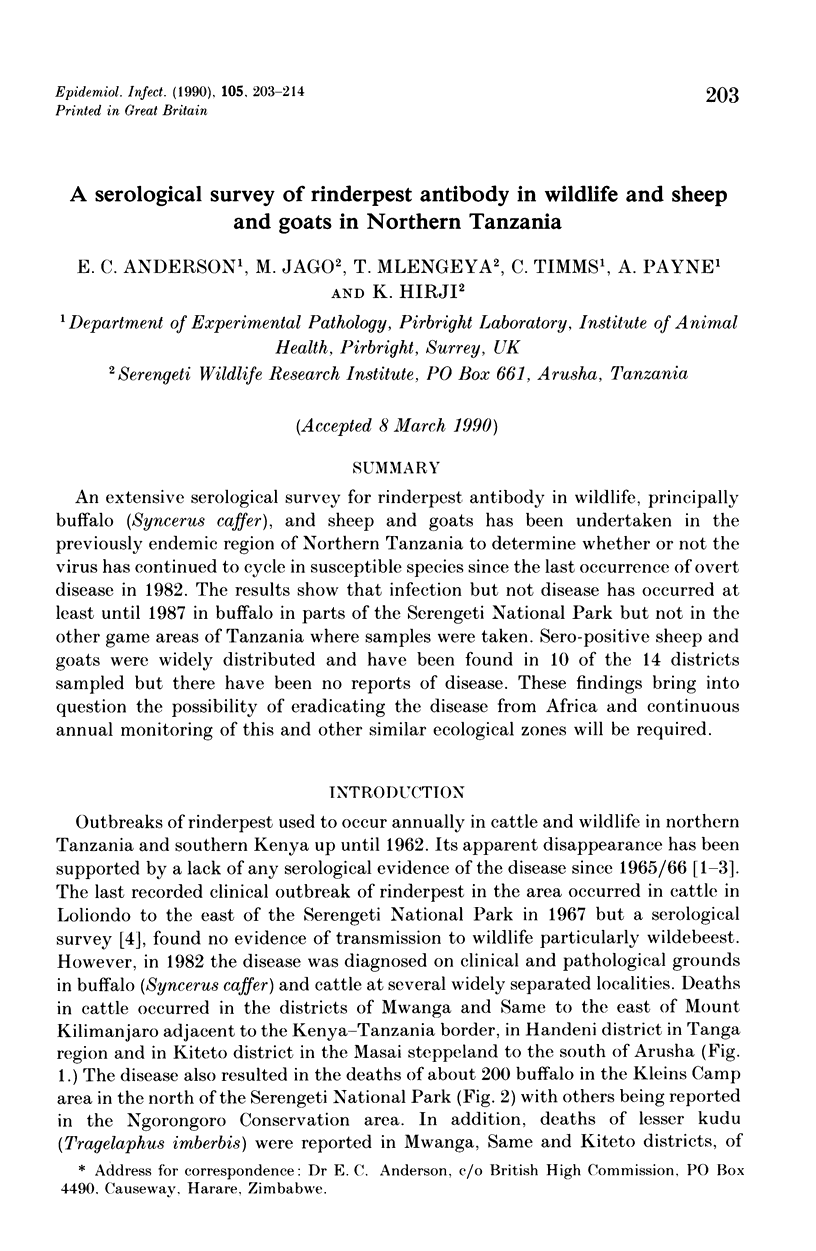
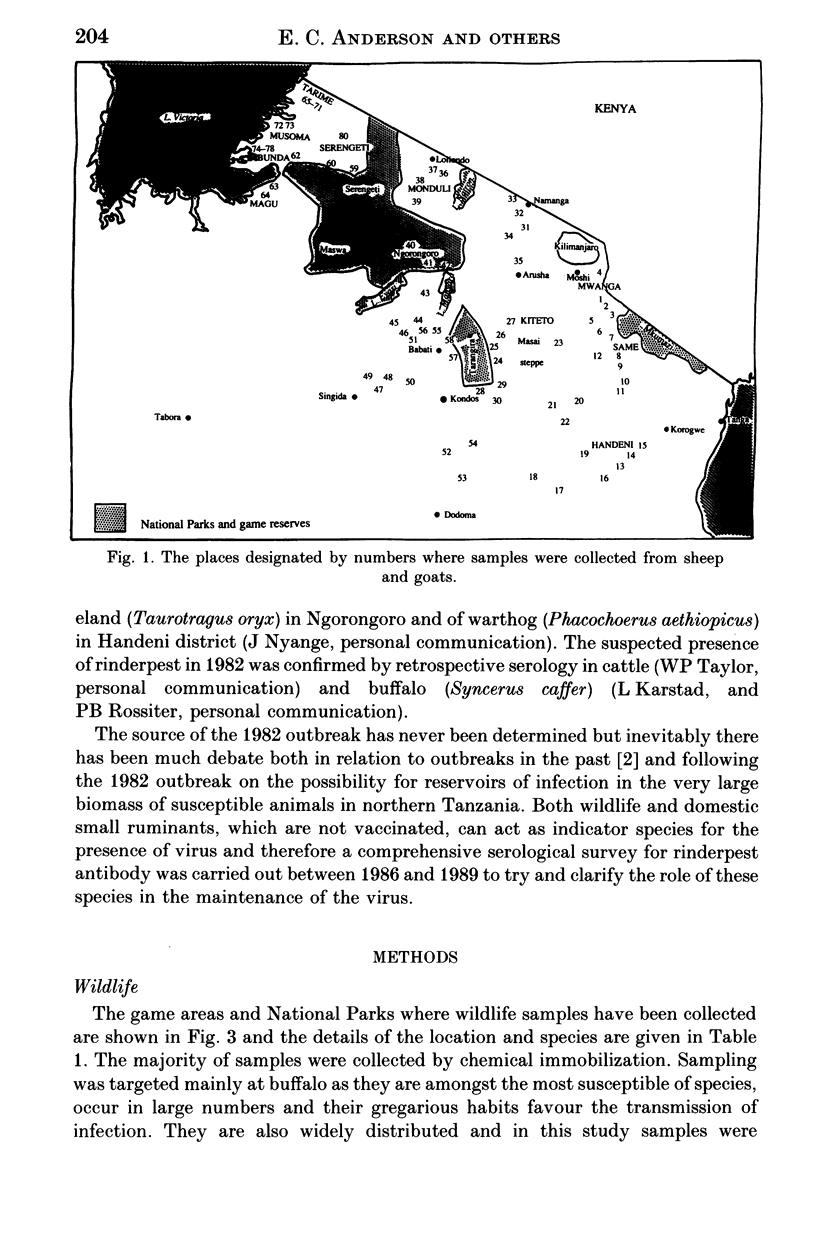
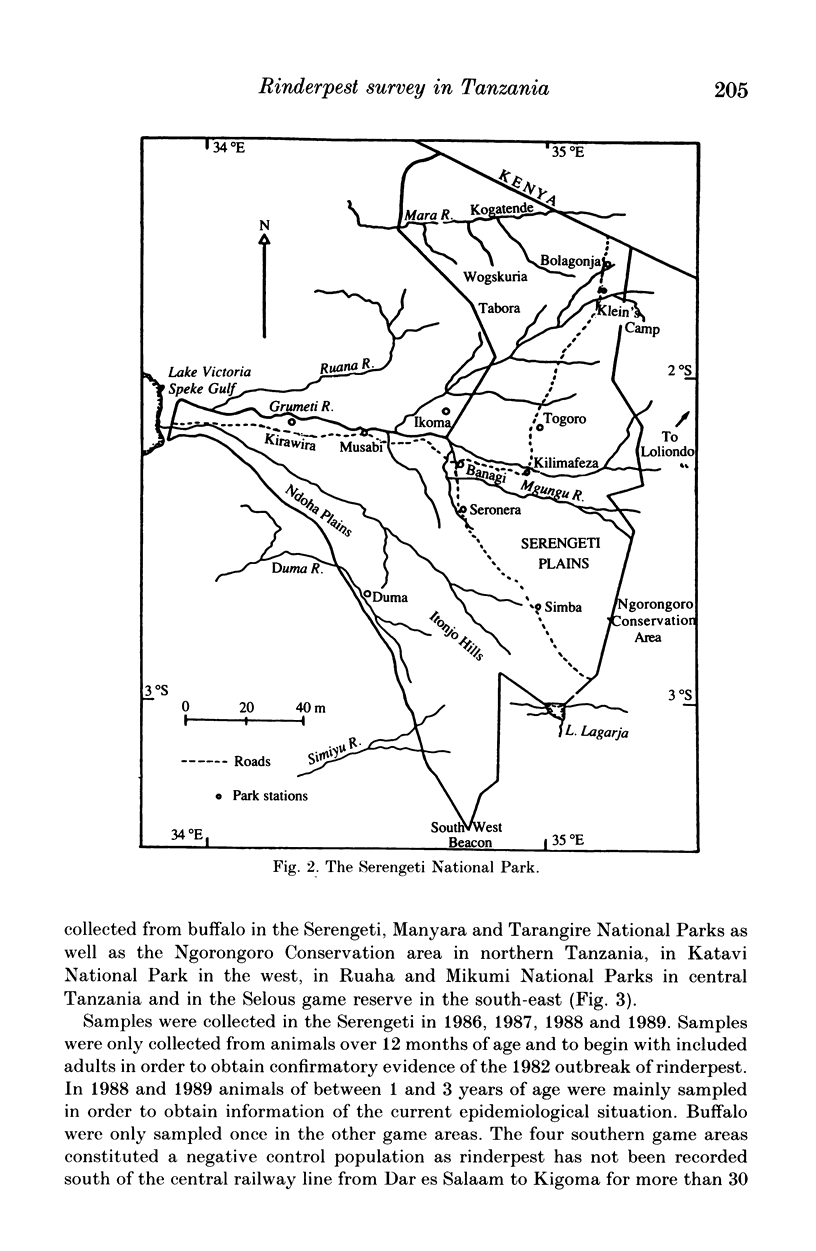
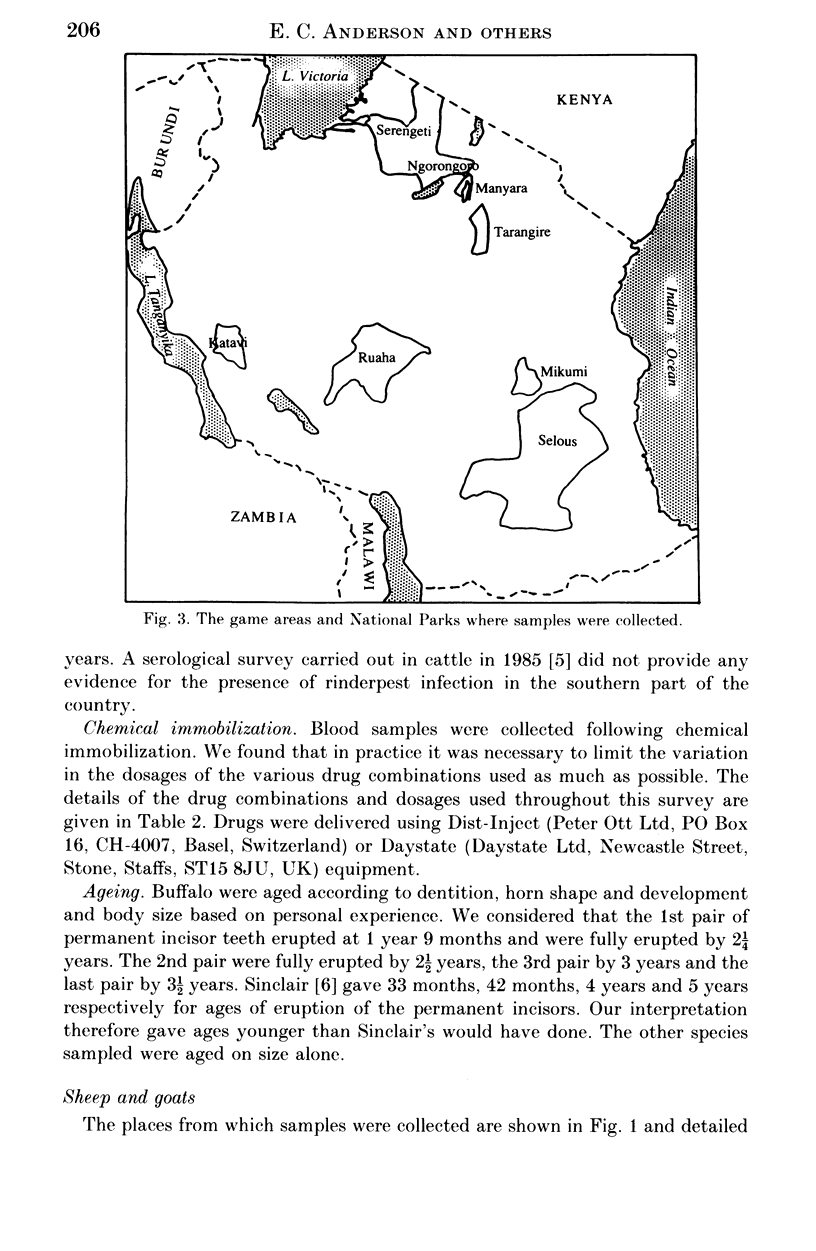
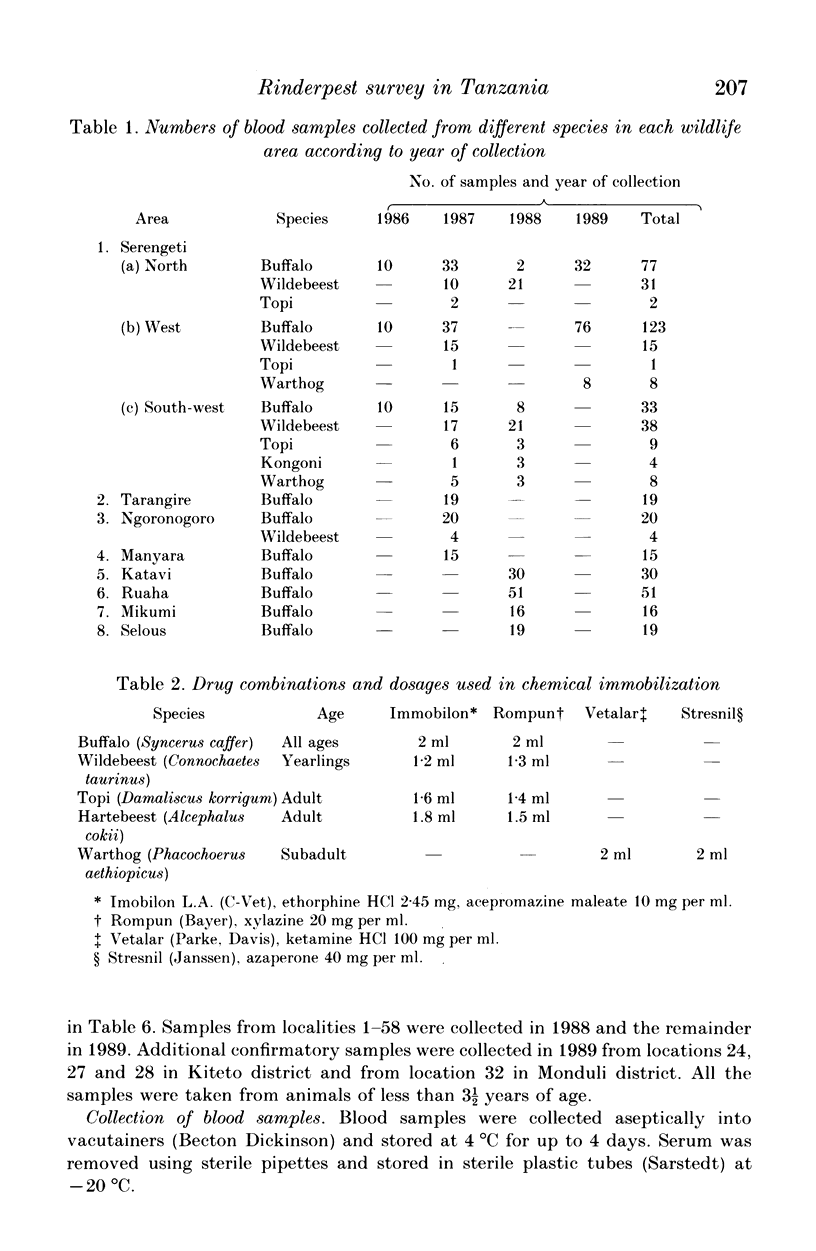
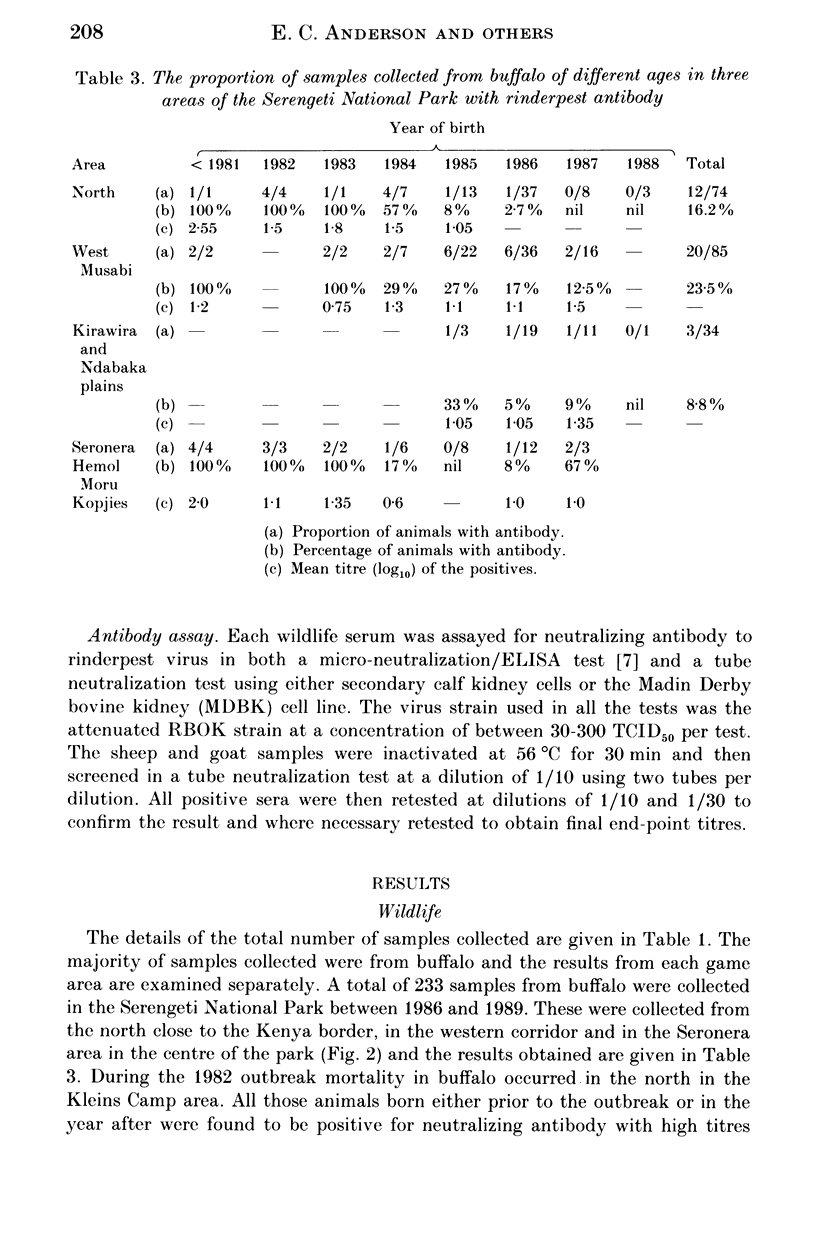
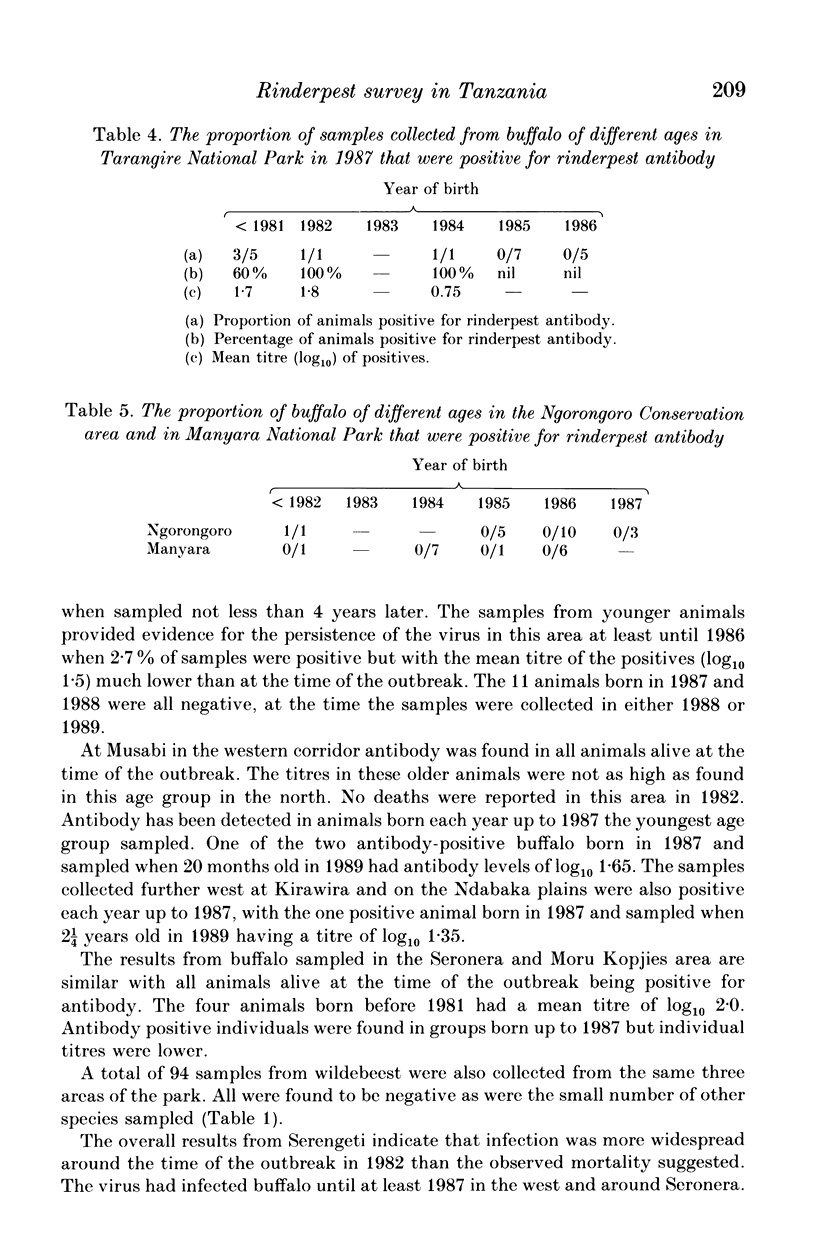
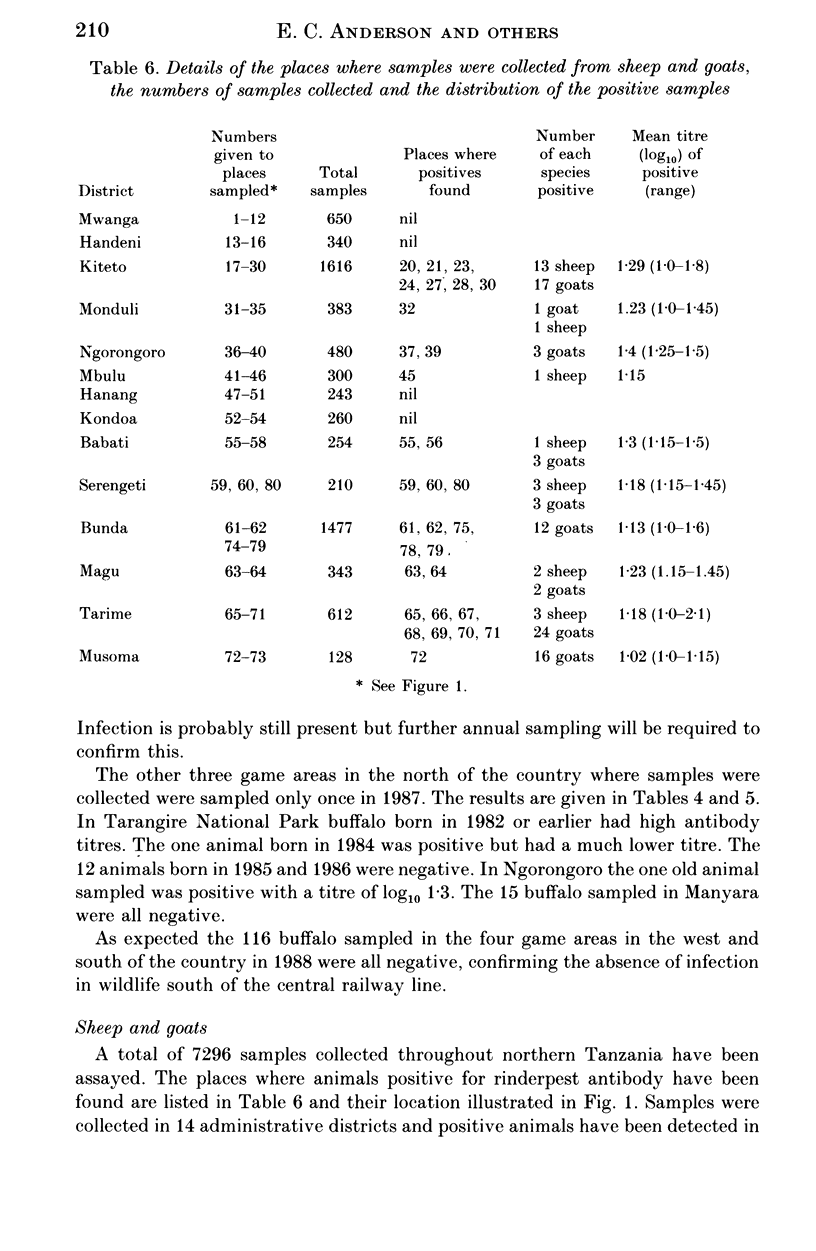
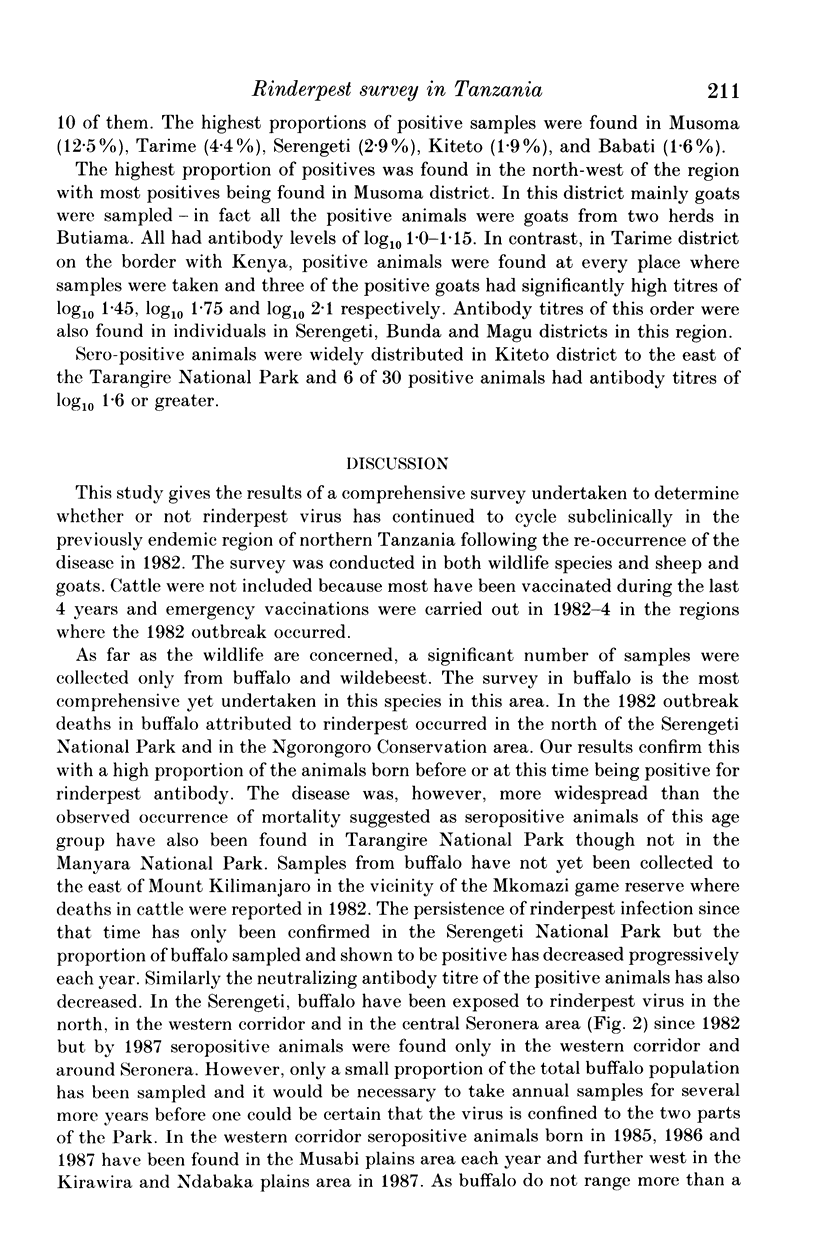
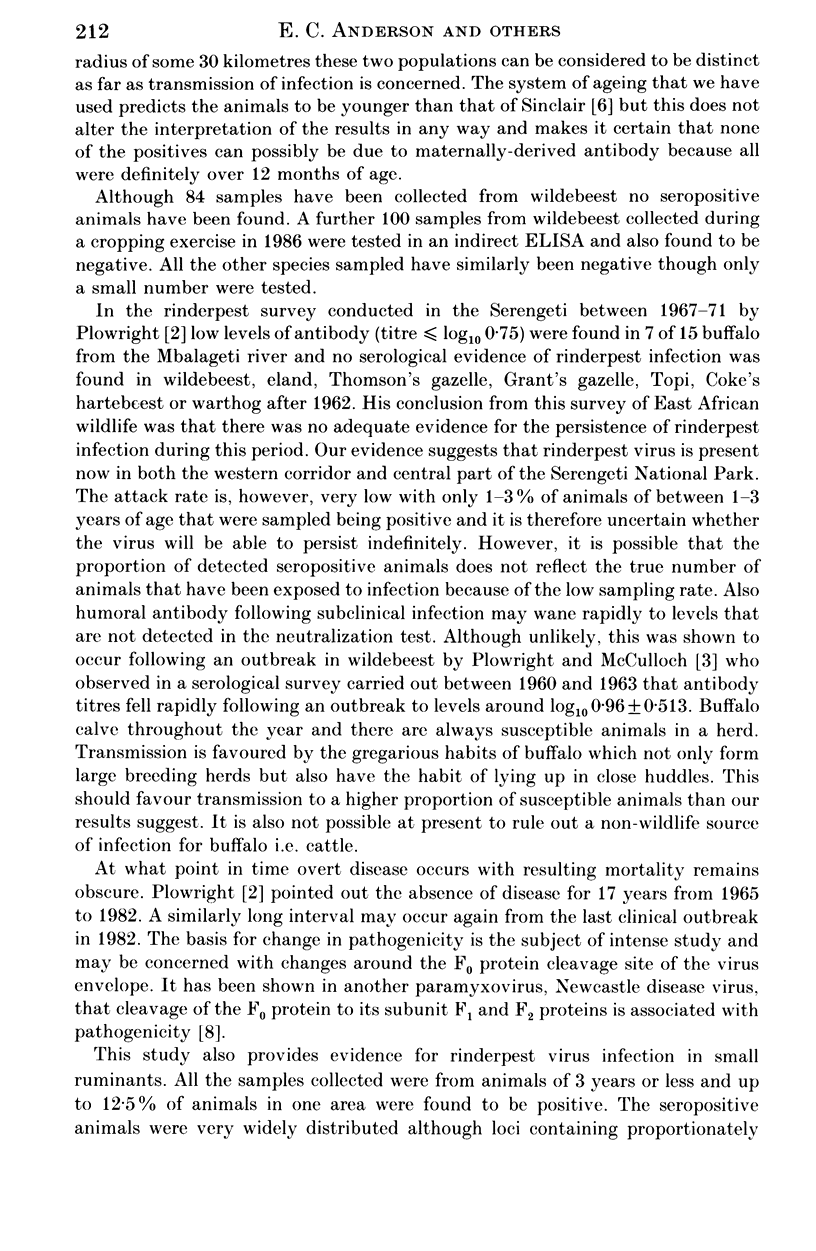
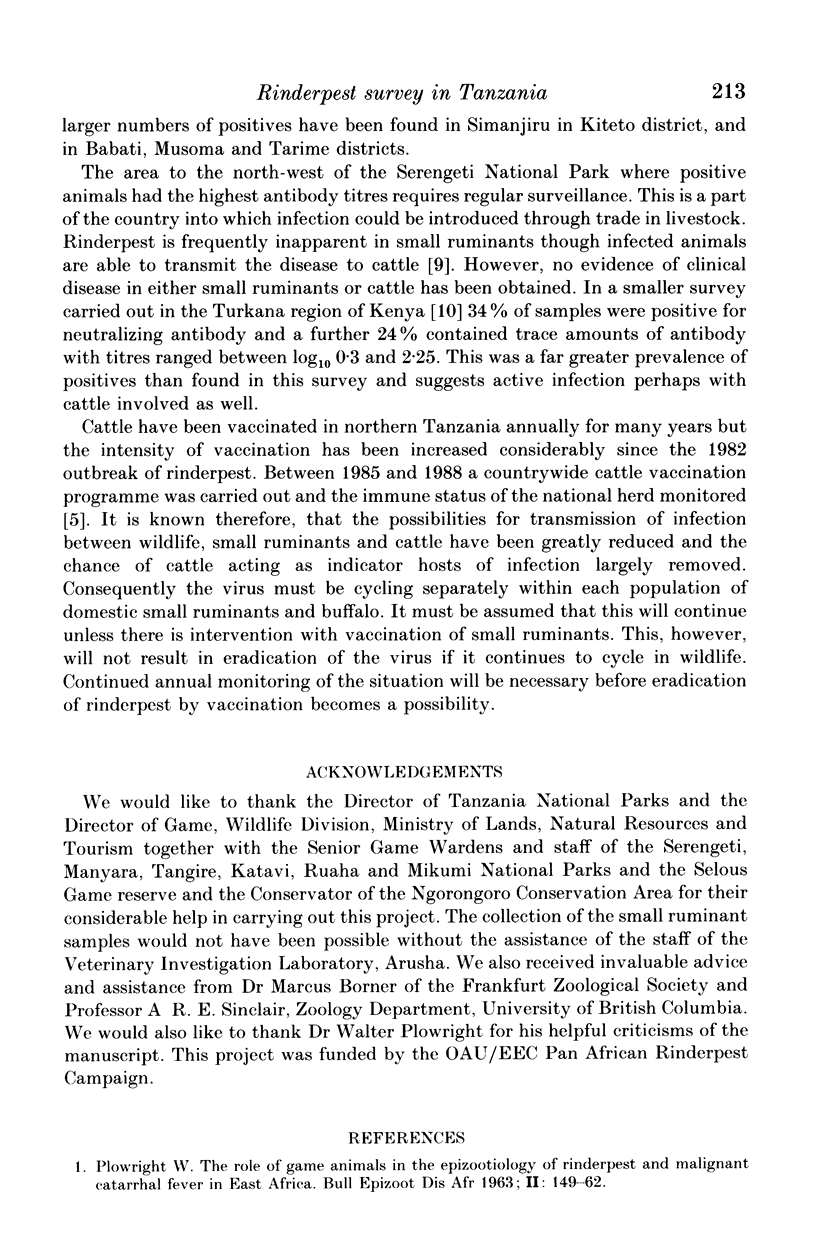
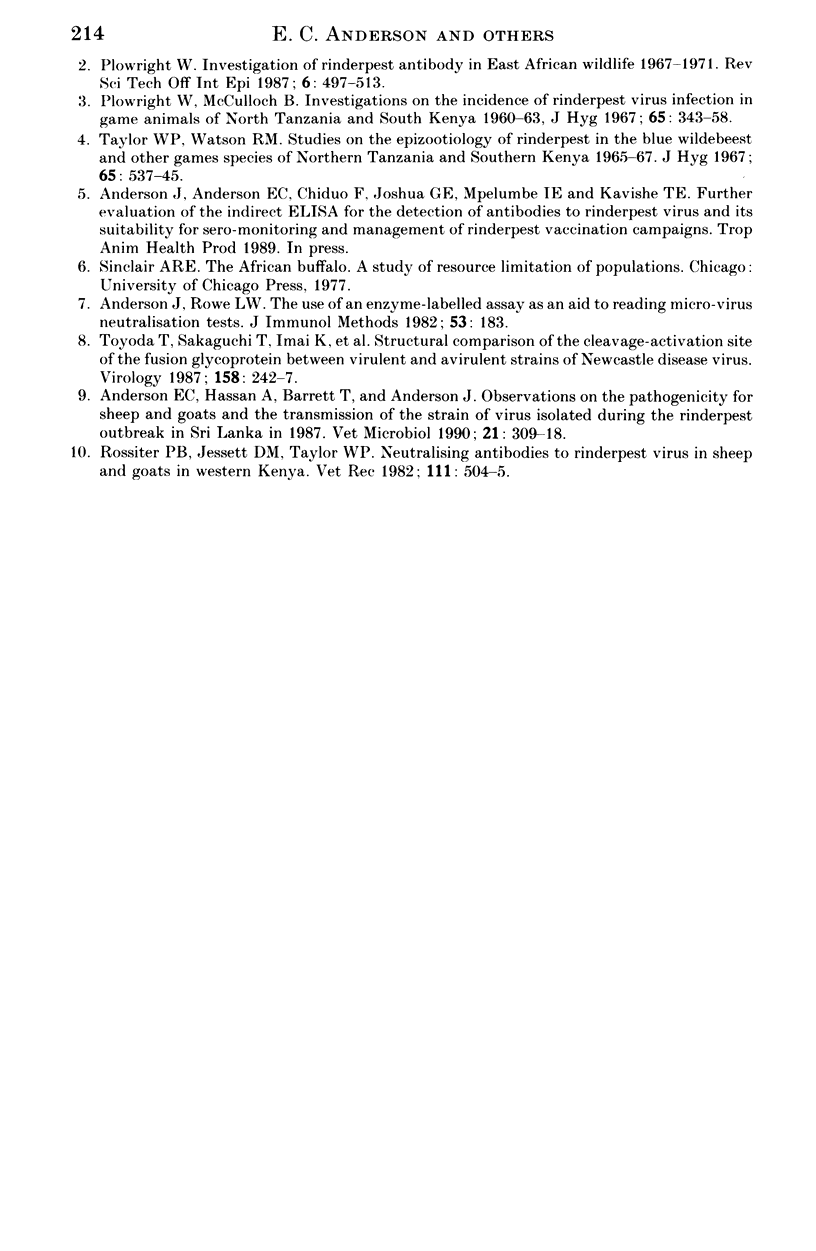
Selected References
These references are in PubMed. This may not be the complete list of references from this article.
- Anderson E. C., Hassan A., Barrett T., Anderson J. Observations on the pathogenicity for sheep and goats and the transmissibility of the strain of virus isolated during the rinderpest outbreak in Sri Lanka in 1987. Vet Microbiol. 1990 Feb;21(4):309–318. doi: 10.1016/0378-1135(90)90002-d. [DOI] [PubMed] [Google Scholar]
- Anderson J., Rowe L. W. The use of an enzyme-labelled assay as an aid to reading micro virus-neutralisation tests. J Immunol Methods. 1982 Sep 17;53(2):183–186. doi: 10.1016/0022-1759(82)90139-9. [DOI] [PubMed] [Google Scholar]
- Plowright W., McCulloch B. Investigations on the incidence of rinderpest virus infection in game animals of N. Tanganyika and S. Kenya 1960-63. J Hyg (Lond) 1967 Sep;65(3):343–358. doi: 10.1017/s0022172400045861. [DOI] [PMC free article] [PubMed] [Google Scholar]
- Plowright W. The role of game animals in the epizootiology of rinderpest and malignant catarrhal fever in East Africa. Bull Epizoot Dis Afr. 1963 Jun;11(2):149–162. [PubMed] [Google Scholar]
- Rossiter P. B., Jessett D. M., Taylor W. P. Neutralising antibodies to rinderpest virus in sheep and goats in western Kenya. Vet Rec. 1982 Nov 27;111(22):504–505. doi: 10.1136/vr.111.22.504. [DOI] [PubMed] [Google Scholar]
- Taylor W. P., Watson R. M. Studies on the epizootiology of rinderpest in blue wildebeest and other game species of northern Tanzania and southern Kenya, 1965-7. J Hyg (Lond) 1967 Dec;65(4):537–545. doi: 10.1017/s0022172400046064. [DOI] [PMC free article] [PubMed] [Google Scholar]
- Toyoda T., Sakaguchi T., Imai K., Inocencio N. M., Gotoh B., Hamaguchi M., Nagai Y. Structural comparison of the cleavage-activation site of the fusion glycoprotein between virulent and avirulent strains of Newcastle disease virus. Virology. 1987 May;158(1):242–247. doi: 10.1016/0042-6822(87)90261-3. [DOI] [PubMed] [Google Scholar]


